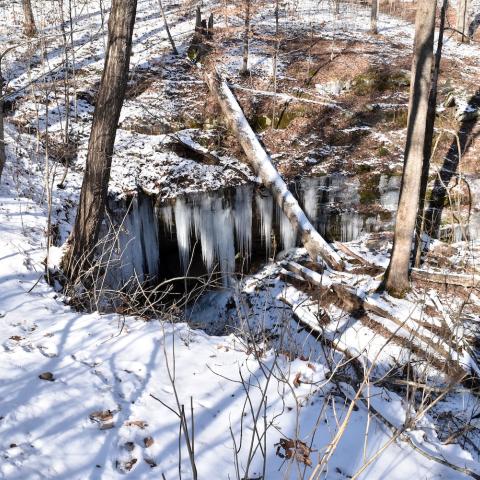
Artist's rendering of proposed seasonal employee housing at Mammoth Cave National Park/NPS
New housing for seasonal staff at Mammoth Cave National Park in Kentucky is being proposed by the National Park Service, which is calling for two two-story housing units, with parking, storage facilities, an indoor gathering space, utilities, and a pavilion for gathering and recreation to replace outdated and structurally questionable housing built back in the 1970s.
Under the design of the proposal, which is open for public comment through November, the units would provlde private bedrooms and bathrooms for 24 seasonal employees.
The lack of affordable housing, the lack of housing to meet staffing needs, and the lack of funding to replace dilapidated housing in recent years has reached a crisis level at many areas of the National Park System.
Progress is being made in areas, such as Yellowstone National Park, where tens of millions of dollars have been invested in new employee housing; at Acadia National Park, where a 4-acre parcel along Jordan Pond Road recently was purchased by Friends of Acadia for future housing for seasonal park employees. The friends group also bought a bed-and-breakfast inn on Mount Desert Island to be transformed into employee housing; and at Arches and Canyonlands national parks, where Friends of Arches and Canyonlands National Parks raised more than $1 million to purchase a nine-bedroom, eight-bathroom house for seasonal park workers.
But many other parks are struggling to meet housing needs for seasonal staff, with officials at Indiana Dunes National Park in Indiana and Mount Rainier National Park in Washington earlier this year advertising for rental housing.
“Employee housing is the limiting factor affecting park operations, project implementation (including addressing administration priorities ranging from implementing the Great American Outdoor Act to connecting with underserved communities) and workplace culture/employee morale,” Grand Teton National Park Superintendent Chip L. Jenkins told the Traveler for a 2021 story on the National Park Service's housing crisis.

Some of the existing housing to be replaced/NPS file
At Mammoth Cave, the existing housing for seasonal staff consists of three buildings with 18 bedrooms and 24 beds. "Even with the existing accommodations, seasonal employees frequently have to double up or even triple up in bedrooms and/or sleep on couches during the busier summer periods at the park. Seasonal employees may have substantially different schedules from one another and requiring 'double bunking,' which can be disruptive." the proposal explained. "The existing buildings are rapidly deteriorating, incurring very high maintenance costs. When these buildings were constructed, high levels of humidity and seasonal perching of water on the surface were not taken into account in the design. Consequently, significant structural deterioration has occurred, such as rotted structural members, that has been addressed by maintenance over the years."
The proposal calls for the housing units to include solar panels on each building, personal storage, and sufficient employee parking. There also would be a vegetable gardening area for the employees to use, and the installed lighting in and around the units would be in compliance with maintaining the park’s International Dark Sky certification. A sand volleyball court also is in the layout, as is a fire pit, compost pit, and rain barrel.
If approved, the housing would be built within the loop roads accessing the existing historical housing and Superintendent’s Office and separated from the maintenance portion of the Operations Area where the current seasonal housing is located.
The budget for the project is around $7 million, but funding has not been finalized yet.

Layout of proposed employee housing area/NPS


 Support Essential Coverage of Essential Places
Support Essential Coverage of Essential Places







Add comment